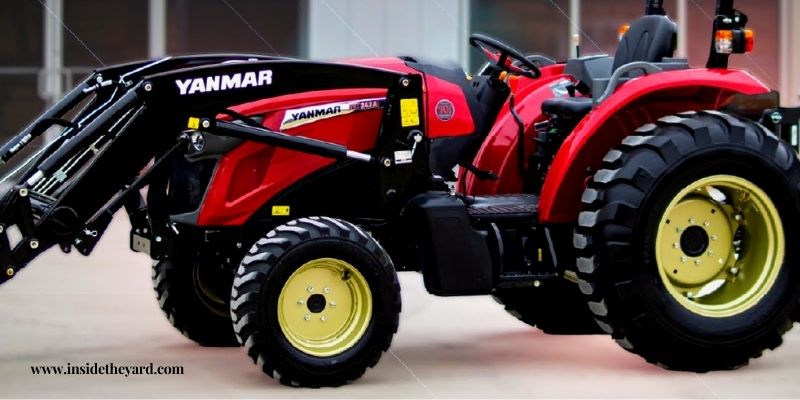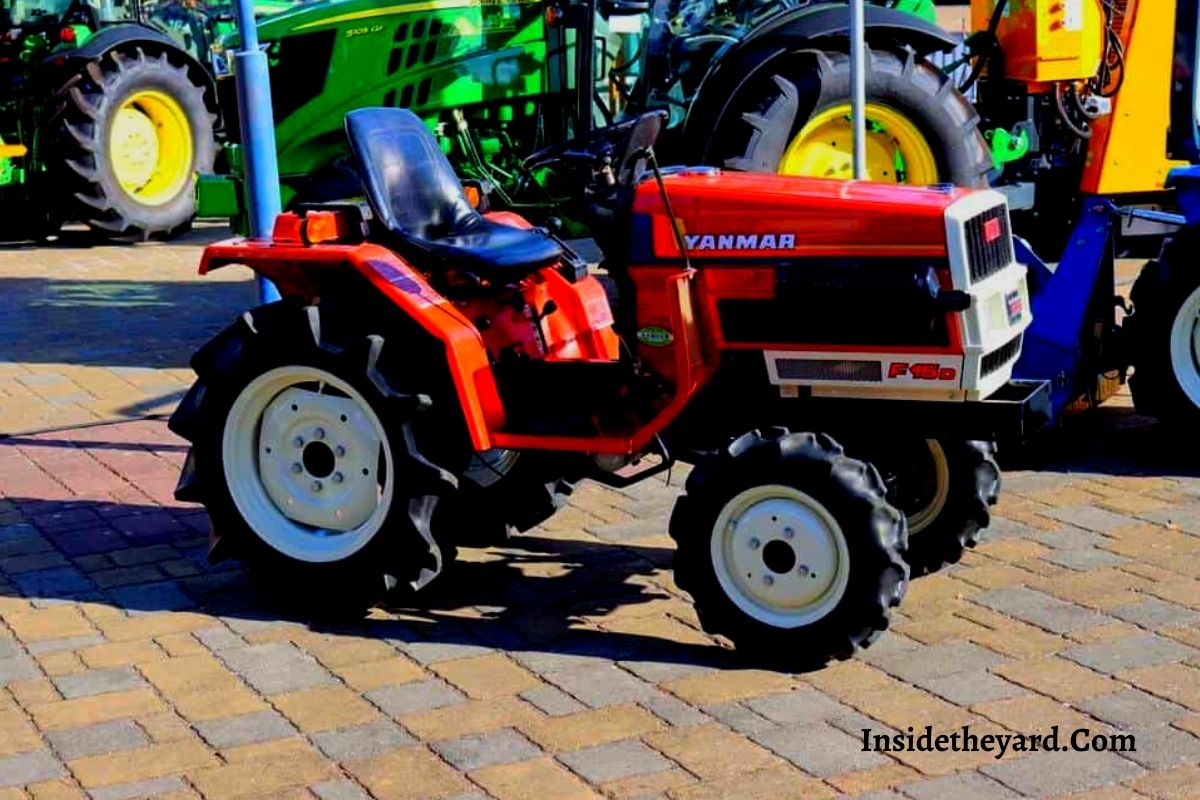It’s great news that you have decided to purchase a Yanmar Tractor no doubt. But before you really put your mind into a certain model finding all the manufactured claims good things about it, make sure it’s not one of those Yanmar tractor models to avoid. Yap, there are a handful of ones that are not exactly up to the mark to be fair!
Older Yanmar tractors are definitely great. And those are as reliable as the new models. Yanmar in general is a well-known manufacturer providing reliable tractors in the industry.
But you must check the current condition to really determine whether that model is worth your money or not. No matter if it’s old or new or how good the brand is!
And we believe that decision will get a little easier with knowing models from this particular brand that one should think twice before buying. So, Shall We Start?
Here Is The List Of Yanmar Tractor Models To Avoid

Without beating around the bush, let us present all the Yanmar models to avoid which don’t provide future support to replace problematic parts and are not the best in performance overall.
Tractors That Don’t Provide Key Replacement Part
Tractors Engine Speed Over 45 HP Power
Things You Want To Watch Out For Old Yanmar Tractors
Keep in mind, that a tractor with just 20 hours on it, will only perform 45 minutes every year, which is almost useless. So, when a seller uses such terms, you should have the idea to ignore such invalid deals.
And these were a few but most common misleading tactics a handful of dealers use. You should be aware of it before making a purchase.
More To Know Before Buying A Yanmar Tractor
There is actually so much more that you should be aware of regarding Yanmar tractors to be completely prepared of purchasing one. And that’s what this section is all about. It might get a little longer, but that’s okay as long as we cover all the important parts you must know about.
Power Steering In Yanmar Models Is Very Rare!
There are many who would like to have a power steering option. And if you are one of them, know that most Yanmar models don’t have it.
This is due to the front axles that set up the design of Yanmar. And it just makes almost no need for a power steering option. Also, there’s no doubt that the non-power steering route is way easier.
Imagine steering with a complete dirt load in the loader. It’s going to be a pain when you are at a dead stop. If you decide to steer from the stop, you basically are compromising axles, tie rods, steering and whatnot.
Quite similar to what happens with a car. However, as soon as you get back to moving, things are easy once again.
So, if you manage to get your hands on a model with power steering, it won’t be a bad deal by no means. However, one limitation you will most likely face is getting steering unit components.
This is because of the rare usage of power steering in Yanmar tractors. Obviously, the parts will be less made and so less likely to be available. Also, the power steering box has mostly parts that are almost impossible for servicing.
There are O-rings, seals, intricate valves, and similar complex components. A power steering kit will be really helpful for some models though. This is not the case with the simple standard steering box rebuild of Yanmar tractors.
Abused or Improperly Maintained Tractors Are Big No!
Clearly, this is about the old used tractors. You already know the models that should be avoided. And the next most important thing to do is to make sure the tractor is not too much used (almost abused). Also, whether the previous owner maintained it well or not.
Considering the overall existing condition of a Yanmar tractor is super important. Having leaking seals around the axes will end up costing you a heavy amount of money. Because some of these seals on tractors are super difficult to get.
Reconditioned Tractors Are Fine (But Refurbished Ones Are Not!)
Having a fresh pain coat with new seals is what some dealers will refer as reconditioning. And that just means the tractor behind is in great shape. Just a few minor cosmetic issues and nothing more. These are absolutely normal.
However, you must watch out for the type of refurbishing that is done on F-grade tractors. The ones that went through the worst. From submerging in the river to being on fire. It is just heavily damaged and pieced back from a huge junkyard it was initially sent to.
If you don’t know much about how some rebuilding shops work, basically pieces from junkyards are scrambled and fitted together to rebuild a tractor.
This means an axle r even engine from one model will go into another. Piston, gear, and so on are put together until a tractor that somewhat works is pieces together.
Now the problems with such rebuilding are
For example, a tractor with another model’s axle might need a part for the front axle. But since it’s not originally the axle of the current model, there’s hard-luck finding the part
Torque specs are heavily ignored. Substitutes of improper pieces are super common. And you will even find cornets cut to fit. Basically, it’s a time bomb that is not blasting at the moment but will eventually.
So, make sure you check and confirm that’s not the case with the old Yanmar tractor you are trying to buy.
For Your Information – If you witness a sign of prior repair, that’s not a problem. Unless it was done by a mechanic under-skilled.
Check The Wheel’s Engagement & Loaded Arm Raising
This is for compact size 4-wheel drive tractors mainly. You want to ensure the front wheels are engaging properly. A hill or washout will be perfect for testing the engagement.
Also, you want to check the 3-point system. It should be able to raise and lower the load. Keep in mind that without any load, even the most compact tractors with major issues will have no problem raising the arms.
So, the real test would be with a load on it. You can try standing on them and then try raising them. It’s also fine to use a type of implement instead.
Same goes for PTO system. Any tractor with major issues in this specific system won’t fail turn failing if there’s no load. The ones with the burned clutch as well. So again, there’s no alternative to testing with a load. You can try hooking up with a toller or mower.
And then see if it is still working. You also want to test all the available speeds to confirm those are working. There are so many imported compact size tractors with multiple speed PTOs.
A Cooler Engine Will Be Easy At Showcasing Existing Problems
Now, what does that mean? Well basically when diesel engines are warm, they have a better start. And so, whatever issues the engine might be having won’t really make it up to your eyes. Because of this, you want to make sure the engine is cool. And then give it a start.
This is a very common trick that dealers use to hide engine issues. And also, the use of starting fluid to get a smooth start in front of buyers, which is by the way an awful thing for the engine.
After starting the engine, you may hear some clattery sound and rough running. That’s actually normal with a small diesel engine usually used for compact tractors. The next thing you want to do is let the engine warm up a little bit more.
And eventually, the sound should go away as well as it should smooth out. Also know that a little smoke with 1st time starting is common in Diesel engines. The same thing happens when under a heavy load. And that does not indicate issues.
But it’s definitely a problem if the engine smokes for a longer period. Also, if there’s a burnt oil smell accompanying it.
Other Things To Inspect Are
- There should be a couple of brake pedals for turning. Both need to work fine.
- The charging system needs to function properly. Even if the engine is not running, the battery or alternator light should turn on with the key in the ON position.
If the light is not coming, make sure to test with a voltmeter and ensure the charging system is giving 13.5 to 14.5 Volts of reading.
General Problems Seen In Yanmar Tractors
Now we’re done talking about a few things that you need to personally check before buying a particular Yanmar tractor. However, a few issues are prevalent with Yanmar tractors, and that’s what we would like to point out here.
The first one is difficulty in starting during cold weather. There were many reports regarding some Yanmar (For example the 1500D model) that during cold weather, the starting was very hard and not smooth.
The same model also faced problems with not running while idling. Starter and solenoid are usually responsible for such issues.
A Helpful Tutorial You May Need!
Frequently Asked Questions (FAQs)
Does Yanmar make good tractors?
In general, there are both good and bad tractors released from Yanmar. But mostly, the models are great and reliable.
The manufacturer does excellent at producing tractors that are tough in making as well as stands the test of time gracefully. Of course, the user’s maintenance and proper usages are crucial factors that will decide the performance in long run.
Is a Yanmar tractor the same as a John Deere?
Not really! It’s actually the engine that makes people have such confusion. John Deere compact utility tractors have engines produced by Yanmar. As the engines are known for being exceptions in terms of compactness, efficiency, and quality. And that’s basically it!
Can you get parts for Yanmar tractors?
Yes, you can! There is an official parts store of Yanmar tractor online where you should be able to find information regarding parts as well as the spare replacements. However, power steering components are pretty rare so hard to be available.
How many hours will a Yanmar tractor diesel last?
Most Yanmar that got recalibration or rebuilding of injectors, will be able to last 10,000 hours maximum. Again, it’s not a predictable thing as users have different usages and maintenance habits.
Where are Yanmar tractors made?
The Yanmar tractors are made in Adairsville, Ga. It is located in North Atlanta. There are factories for the tractors’ production.
Wrapping Up
Now you have a solid knowledge of what Yanmar tractor models to avoid as well as information close to it. Hopefully, your Yanmar tractor purchase will be something you’ll never regret of.
However, make sure you sit down and think about the whole thing before jumping to a conclusion about which model to get.
It’s also best to get some expert suggestions or recommendations who can hear what exact expectations you have from the tractor. And that will make the purchase even better!
